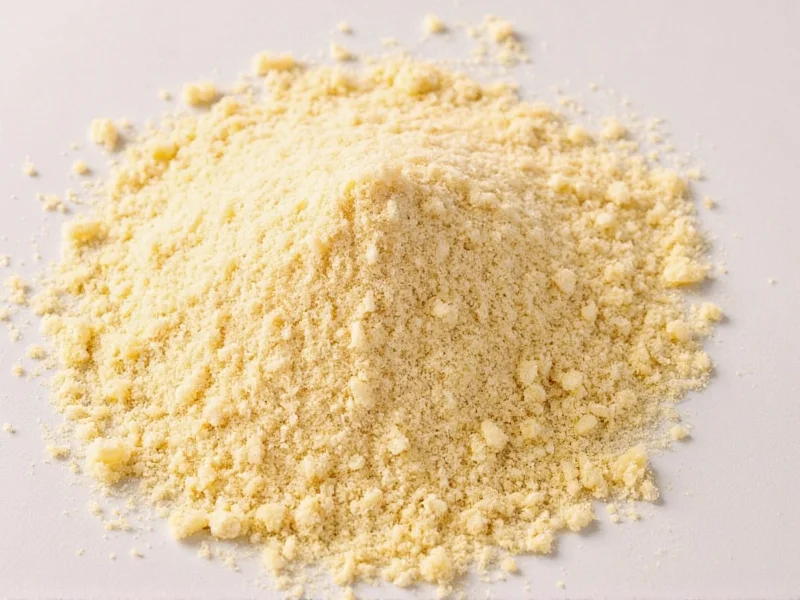Understanding the distinction between these two pantry staples prevents recipe mishaps and ensures perfect seasoning. Though both originate from dehydrated garlic cloves, their processing methods create distinct characteristics that impact cooking results significantly.
Physical Characteristics Compared
The most immediate difference between granulated garlic and garlic powder lies in their physical structure. Granulated garlic consists of small, coarse particles resembling fine sand, typically measuring between 0.5-1 millimeter in diameter. Garlic powder, by contrast, is ground to a fine, flour-like consistency with particles under 0.5mm that feel almost silky to the touch.
| Characteristic | Granulated Garlic | Garlic Powder |
|---|---|---|
| Particle Size | 0.5-1mm (coarse) | Under 0.5mm (fine) |
| Dissolution Rate | Slower (30-60 seconds) | Instant (5-10 seconds) |
| Flavor Release | Gradual, more complex | Immediate, more intense |
| Best For | Dry rubs, slow-cooked dishes | Sauces, dressings, quick recipes |
| Substitution Ratio | 1:1.25 (more powder needed) | 1:0.8 (less powder needed) |
Production Process Differences
Both products begin with fresh garlic cloves that undergo dehydration, but their processing diverges afterward. Manufacturers dehydrate garlic cloves at low temperatures (120-140°F) to preserve flavor compounds. For granulated garlic, the dehydrated cloves are coarsely ground and sieved to achieve uniform granule size. Garlic powder undergoes additional milling to achieve its fine consistency, often passing through multiple grinding stages.
This extra processing affects flavor intensity—garlic powder's increased surface area exposes more allicin compounds to air, creating a more pungent aroma but potentially reducing shelf stability. The additional grinding also generates heat that can slightly alter flavor compounds compared to granulated garlic.
Flavor Profile Analysis
While both deliver concentrated garlic flavor, their taste profiles differ noticeably. Granulated garlic offers a more rounded, complex flavor with subtle sweet notes that develop gradually during cooking. The larger particles create a slower release of flavor compounds, making it ideal for dishes with longer cooking times.
Garlic powder provides an immediate, more intense garlic punch with sharper pungency. Its fine texture allows for instant flavor dispersion, but this can sometimes result in a slightly bitter edge if overheated. Professional chefs note that garlic powder often tastes more "raw" compared to the mellowed profile of granulated garlic.
Culinary Applications Guide
Choosing between granulated garlic vs garlic powder depends on your cooking method and desired flavor development:
- Use granulated garlic when: Creating dry rubs for meats, seasoning roasted vegetables, or in slow-cooked dishes like stews where gradual flavor release is beneficial. Its texture helps it adhere to surfaces without clumping.
- Use garlic powder when: Making sauces, dressings, or quick-cooking recipes where instant dissolution is necessary. It's superior for applications requiring uniform flavor distribution like marinades or spice blends.
For baked goods or delicate dishes, garlic powder's fine texture integrates more seamlessly without creating gritty pockets. In barbecue rubs, many pitmasters prefer granulated garlic for its ability to form a flavorful crust on meats.
Substitution Guidelines
When substituting one for the other, understanding the granulated garlic vs garlic powder conversion ratio is crucial. Due to differences in density and surface area:
- Replace 1 teaspoon granulated garlic with 1¼ teaspoons garlic powder
- Replace 1 teaspoon garlic powder with ¾ teaspoon granulated garlic
Always add the substitute gradually and taste as you go, especially in delicate dishes. For best results in sauces or dressings, reconstitute granulated garlic with a small amount of water before adding. When using garlic powder in dry rubs, mix with other spices first to prevent clumping.
Storage and Shelf Life Considerations
Both products require similar storage conditions—cool, dark places in airtight containers—but their shelf lives differ due to particle size. Granulated garlic typically maintains peak flavor for 2-3 years, while garlic powder's increased surface area makes it more susceptible to oxidation, reducing its optimal shelf life to 18-24 months.
Signs of degradation include faded color (both should be pale to medium tan), diminished aroma, or bitter taste. Never store either product near heat sources or in humid environments, as moisture causes clumping and flavor deterioration. For extended storage, consider refrigeration in vacuum-sealed containers.
Common Questions About Garlic Forms
Can I substitute granulated garlic for garlic powder in recipes?
Yes, but adjust quantities using a 1:1.25 ratio (use 25% more powder when substituting for granules). For best results in liquid-based recipes, dissolve granulated garlic in warm water first. In dry applications like rubs, the substitution works more directly without adjustment.
Which has stronger flavor: granulated garlic or garlic powder?
Garlic powder delivers more immediate, intense flavor due to its fine texture and greater surface area. However, granulated garlic provides more complex, rounded flavor that develops gradually during cooking. In blind taste tests, powder registers as 20-30% stronger initially, but granules maintain flavor better in long-cooking applications.
Why does my garlic powder clump while granulated garlic stays loose?
The fine particles of garlic powder have greater surface area that attracts moisture more readily. Anti-caking agents in commercial products can degrade over time. To prevent clumping, store powder with a silica packet and avoid introducing moisture when scooping. Granulated garlic's larger particles naturally resist clumping due to less surface area contact.
Is one form healthier than the other?
Nutritionally identical since both come from dehydrated garlic, containing similar allicin content when fresh. However, garlic powder's increased surface area may lead to slightly faster nutrient degradation during storage. Neither form contains additives when pure, but always check labels for anti-caking agents in commercial products.
How do I make my own granulated garlic at home?
Dehydrate minced garlic at 140°F until completely brittle (8-12 hours), then pulse in a food processor until reaching coarse sand consistency. Sift through a 1mm mesh strainer to remove fine particles that would become powder. Store in an airtight container away from light for optimal shelf life.











 浙公网安备
33010002000092号
浙公网安备
33010002000092号 浙B2-20120091-4
浙B2-20120091-4